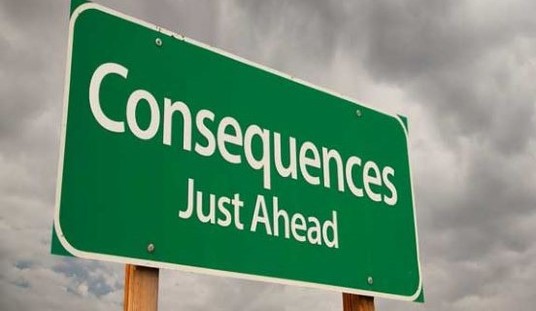For much of the past week, the national discourse has revolved largely around gun rights and gun control.
But in the days leading up to the Uvalde massacre, the big topic was abortion. From the moment Justice Samuel Alito’s draft opinion was leaked and word got out that Roe v. Wade’s days may be numbered, abortion advocates were fully dedicated to making sure that Americans didn’t forget about the importance of the federal government making it OK to kill unborn babies through all stages of gestation.
Many of these advocates have invoked Science™ to defend their position, which is easy to do when Science™ is determined by Scientific American:
As light can exist as both a particle and a wave, an abortion provider can honor birth and fight for a person’s right to give birth when it’s right for them https://t.co/mqElm1kLVS
— Scientific American (@sciam) May 25, 2022
Maternal-fetal medicine physician Cara C. Heuser writes:
Polarization on this topic is not accidental but rather a calculated political strategy designed to motivate voters (consider the term “pro-life” as an example of something misleading and intentionally divisive). So how do thoughtful and well-intentioned people then approach this topic? Is it possible to recognize the moral value many people place on a pregnancy and still believe that abortion is a fundamental right and, in many cases, a moral good? My personal experiences suggest that it is not only possible, but if we want to make progress on this issue, necessary.
Generally attributed to Carl Jung, “holding the tension of opposites” is how psychologists describe the ability of the human brain to accept seemingly contradictory concepts. My favorite example is the nature of light: is light a particle or a wave? Quantum mechanics, a discipline within physics, has demonstrated that both are true Sometimes light acts like a particle, sometimes a wave. This duality explains all the characteristics of light that have been observed experimentally, and has allowed scientists to explore the cosmos in previously unimaginable ways. That these two seemingly irreconcilable beliefs could come together gives me hope that similar harmony could be achieved in the discussion of other deeply polarizing topics, including abortion.
…
Given that one quarter of women in the U.S. have an abortion, many Americans have benefitted directly or indirectly from abortion care. I implore readers to emulate previous generations of scientists who changed our understanding of the universe by their willingness to consider seemingly opposite empirical truths:
Particle and wave, abortion providers and ethical physicians, pro-life and pro-choice.
Recommended
Scientific American: pro-Science™ and anti-science.
This is a really fascinating perspective. While I'm completely out of my depths here, I can't understand compairing the state of light with the human reproduction process.
— Lothar (@AnfieldCat420) May 25, 2022
This comparison makes no sense whatsoever.
— KDelchev (@KDelchev1) May 25, 2022
Just……no.
— Call me no man. (@Callmenoman1) May 25, 2022
this is a horrible way to frame this issue
— Red-White (@redwhitecircle) May 25, 2022
According to our calculations, that’s correct.
You used to have a decent journal. That was when I was a kid in the 70s.
— Joe Pilot, MD (@JoeSilverman7) May 25, 2022
That was dreadful. I miss the pre 90's SciAm
— Scalene (@CapriciousMen) May 25, 2022
I miss the days when you talked about science.
— Manny でかチン ⬛🟧 (@unmundig) May 25, 2022
We all do.
WTF???
How is this at all scientific?
— AJ 🥋 (@AndrewJayabc) May 25, 2022
It uses some words that scientists use … that’s pretty much it.
drop your social justice and stick to fundamental math/physics please.
— Do good things. Engineering beats Activism (@meowmix2333) May 25, 2022
Or drop science and just do the other stuff
— Alessandro Strumia (@AlessandroStru4) May 25, 2022
***
Related:
























Join the conversation as a VIP Member